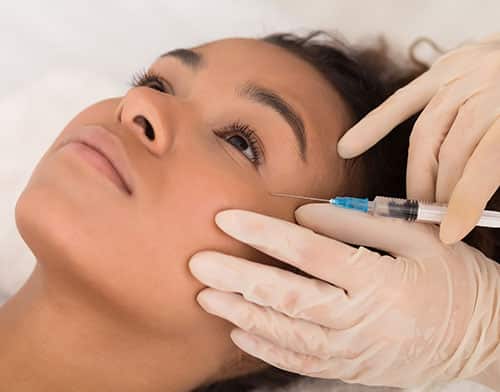How Biostimulating Cosmetic Fillers Work
Technological advances in the field of medical cosmetics have made it easier than ever to combat the signs of aging. A clear example of this is the emergence of biostimulating cosmetic fillers within the market. These dermal fillers work by helping the body produce collagen, which increases plumpness and restores firmness in the skin.
Upon treatment with a biostimulating dermal filler like Belotero, patients will see an immediate improvement as the gel fills in wrinkles and adds volume. However, optimal results take a few weeks to appear, as the stimulation of the production of collagen is not immediate. This two-pronged mechanism of action ensures that the results of treatment with this type of filler last long after the gel itself is absorbed by the body.
What Is The Difference Between Biostimulating Cosmetic Fillers and Hyaluronic Acid Fillers?
The biggest difference between biostimulating cosmetic fillers and hyaluronic acid fillers is the material with which they are made and, consequently, their mechanisms of action.
The most popular biostimulating cosmetic fillers are Sculptra and Radiesse. Sculptra is made of polylactic acid (PLLA), a biostimulating ingredient that has been used in medical products such as sutures and dental implants for decades. Radiesse is made of calcium hydroxylapatite (CaHA), a substance that is found naturally in human bones.
Fillers such as Restylane 1ml with Lidocaine are made of hyaluronic acid. Hyaluronic acid is a substance that occurs naturally within the body and is effective in dermal fillers due to its moisture-retaining properties. Unlike biostimulating cosmetic fillers, hyaluronic acid fillers work by simply adding volume instead of spurring the production of another substance like collagen. Because of this, the effects of hyaluronic acid fillers fade as the gel is absorbed by the body.
Another difference between biostimulating cosmetic fillers and hyaluronic acid fillers is the way in which the ingredients are produced. Biostimulating cosmetic fillers are synthetic. While many hyaluronic acid fillers, such as the popular Juvederm Ultra 3, are also made synthetically, there are a few ones, such as Hylaform, that use natural hyaluronic acid derived from animals.
What’s Better?
There are a number of advantages and disadvantages to using a biostimulating dermal filler instead of a hyaluronic acid filler, and the choice of which to use will depend on the condition of the patient’s skin and their desired results of treatment.
Advantages
One of the biggest advantages of biostimulating dermal fillers is how long they last. Fillers like Sculptra and Radiesse are known to provide results for well over a year, as the newly produced collagen continues to improve the appearance of the skin even after the filler has dissolved. Comparatively, hyaluronic acid fillers only last between six to twelve months, depending on the product. While biostimulating fillers last longer, both types of dermal fillers require touch ups to maintain long-term results.
Biostimulating dermal fillers can add much more volume than hyaluronic acid fillers and are perfect for treating large areas that are undergoing facial atrophy. They can improve the appearance of the facial contour by enhancing the temples, jawline, mid-face, and cheeks, and they can smooth out the skin by filling in deep lines and static wrinkles. Hyaluronic acid fillers are more suitable for moderate volume restoration and filling in fine-to-moderate lines and wrinkles.
Both biostimulating cosmetic fillers and hyaluronic acid fillers are minimally invasive and require no recovery time post-treatment, which is a huge advantage over surgical procedures.
Disadvantages
One of the main disadvantages of biostimulating cosmetic fillers is that the full results of treatment with one are not immediately apparent but instead gradually develop. With hyaluronic acid fillers, the effects are immediately apparent because they do not rely on collagen stimulation. While there will be a slight improvement directly after treatment with a biostimulating dermal filler, the true results will not appear for at least two weeks post-treatment.
Another fact with this sort of procedure, the results of treatment with a bio-stimulating dermal filler are non-reversible, whereas hyaluronic acid fillers can be dissolved. If a patient becomes unhappy with the results from the hyaluronic acid filler treatment, or in the situation of an onset of an adverse reaction to the filler used, then injection(s) of hyaluronidase, an enzyme, can be administered to dissolve the filler previously applied. There is no such option with bio-stimulating dermal fillers.
Finally, the injection procedure for biostimulating cosmetic fillers lasts longer than hyaluronic acid fillers. With the former, multiple injection sessions are typically required to achieve the desired results. These sessions are spaced roughly a month apart, and the patient may require up to three sessions. Hyaluronic acid fillers typically only require one session, though this may vary by product and by a patient’s desired results.





















